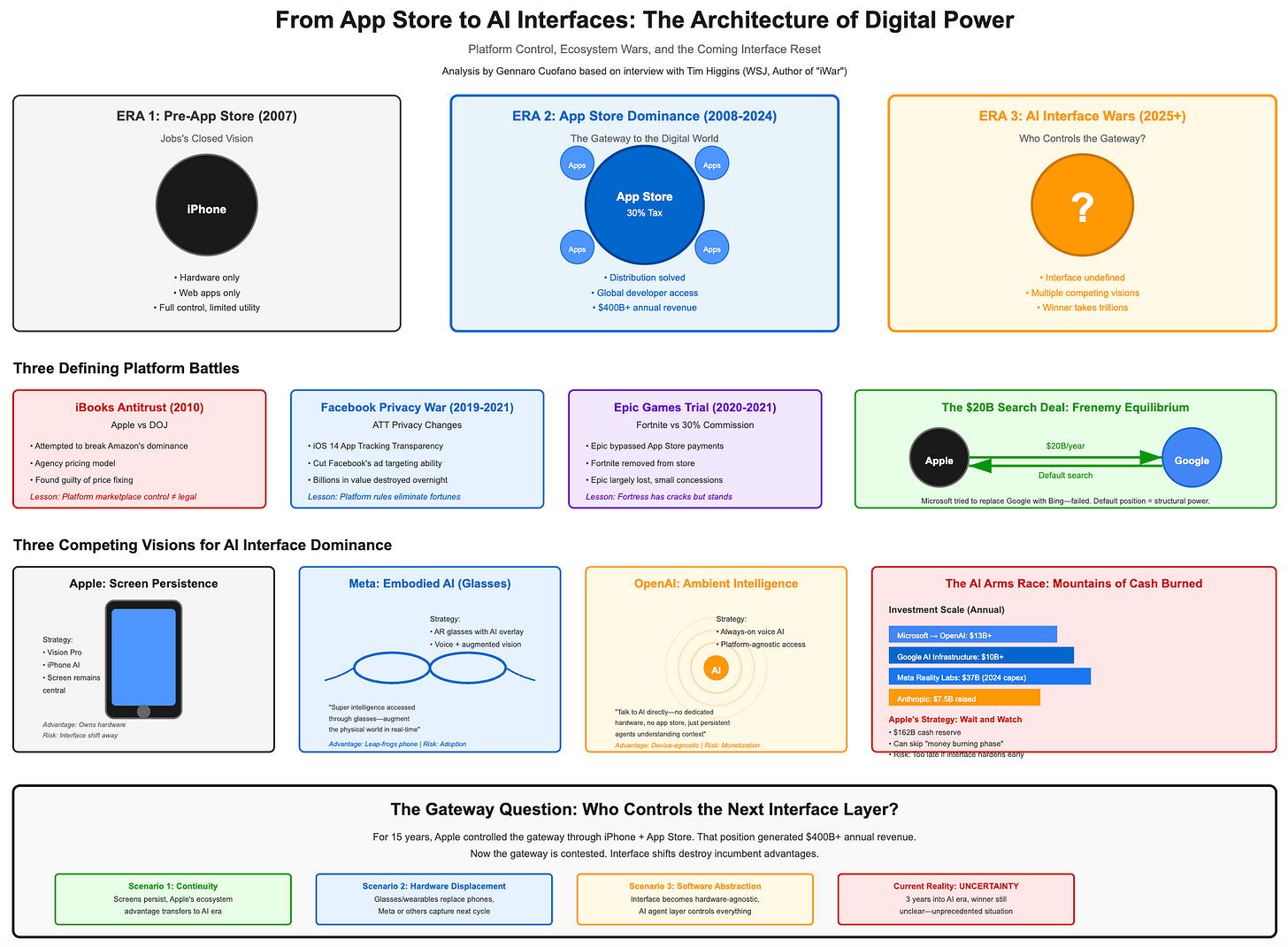The Architecture of Digital Power
When Steve Jobs revealed the iPhone in January 2007, he envisioned a closed system. Apple would create beautiful, integrated software that leverages the hardware’s unique capabilities. Third-party developers? They could build web apps—safe, sandboxed, unable to compromise the user experience, Jobs so carefully curated.
It was a vision of control, of purity, of integrated excellence. It lasted precisely one year.
“The world changed a year later when they created the App Store,” Tim Higgins tells me in our conversation about his new book iWar. The Wall Street Journal reporter, who previously chronicled Tesla’s unlikely survival in Power Play, has now turned his investigative lens to the platform wars that defined the mobile era—and are now being upended by AI.
The App Store’s creation in 2008 wasn’t just a product launch. It was an architectural decision that would reshape global commerce. It transformed Apple from a hardware company into what Higgins describes as “the gateway to the digital world”—a position now facing its most serious challenge since the iPhone’s introduction.
This piece came out of the chat with Tim Higgins to crystallize the key findings from that interview and turn them into the ultimate guide to building a digital platform.




